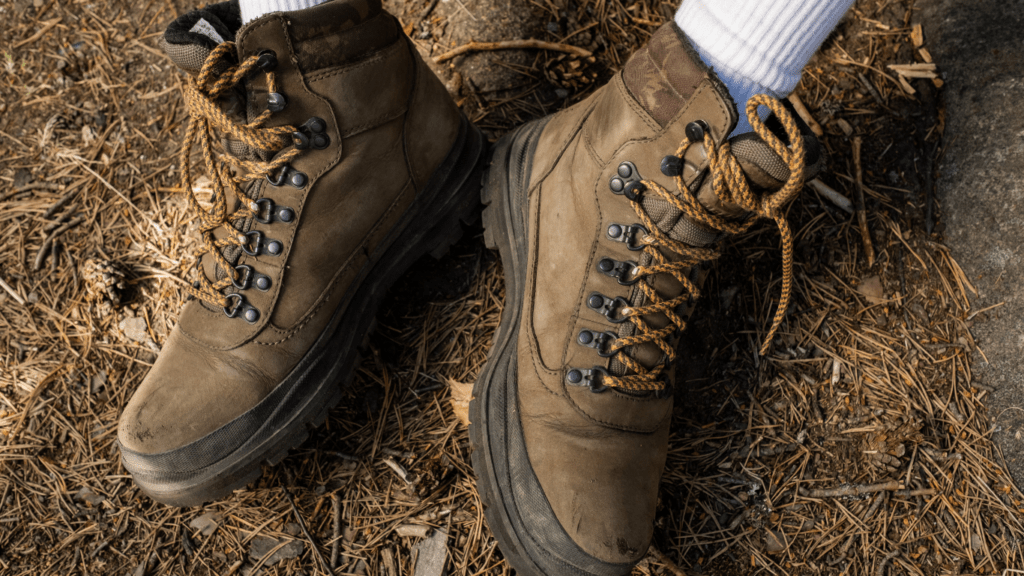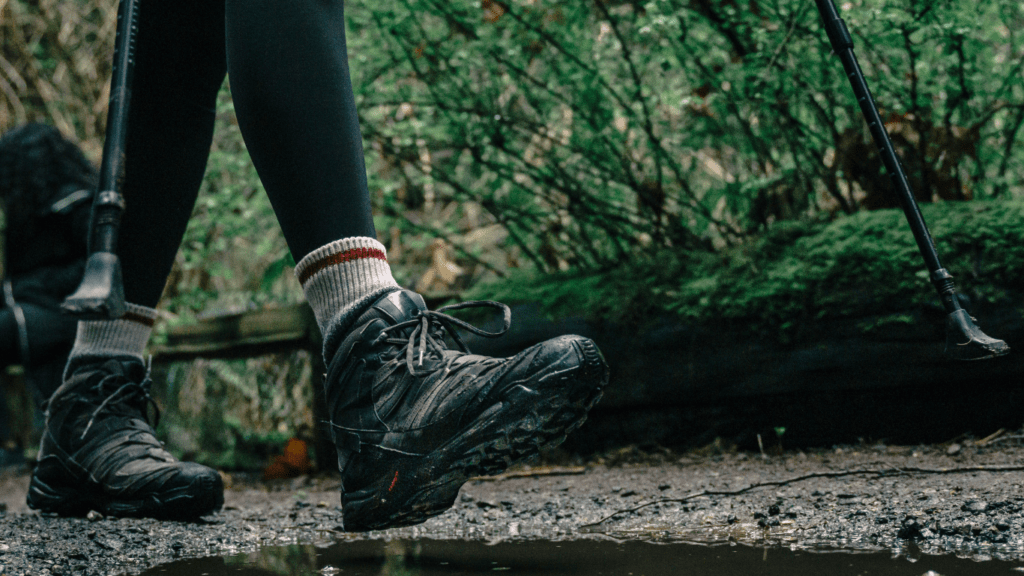Embarking on a hiking adventure is exhilarating, but selecting the perfect pair of hiking boots can be daunting. As an avid hiker, I understand the importance of having the right footwear for different terrains. Whether you’re tackling rocky trails, muddy paths, or snowy peaks, the right hiking boots can make all the difference in your comfort and performance.
In this guide, I’ll share my expertise on choosing the ideal hiking boots for your specific terrain. From understanding the importance of ankle support to selecting the right outsole for enhanced traction, I’ll cover everything you need to know to make an informed decision. So, lace up your boots, and let’s dive into the world of choosing the perfect hiking footwear for your next outdoor escapade.
Understanding Your Terrain
To choose the right hiking boots, it’s crucial to understand the terrain you’ll be exploring. Different terrains require specific features in hiking boots to ensure optimal performance and comfort. Here’s a breakdown of various terrains and the key factors to consider when selecting hiking boots for each:
1. Rocky Terrain
Rocky terrain demands hiking boots with robust construction to protect your feet from sharp rocks and uneven surfaces. Look for boots with durable uppers and a sturdy toe cap to shield your toes. Additionally, a firm outsole with deep lugs provides excellent traction on rocky surfaces, preventing slips and falls.
2. Wet and Muddy Terrain
For wet and muddy environments, waterproof hiking boots are essential to keep your feet dry and comfortable. Choose boots with a reliable waterproof membrane to prevent water from seeping in. Moreover, boots with a high-cut design offer better protection against splashes and mud, keeping your feet clean and dry throughout the hike.
3. Snowy and Icy Terrain
When hiking in snowy or icy conditions, insulated hiking boots are paramount to keep your feet warm and protect them from frostbite. Opt for boots with Thinsulate or other insulation materials for maximum warmth. Additionally, a slip-resistant outsole with specialized treads designed for snow and ice provides the necessary grip to navigate challenging winter terrain safely.
4. Desert Terrain
In desert environments with hot temperatures and abrasive sand, breathable and lightweight hiking boots are essential to prevent overheating and discomfort. Look for boots with mesh panels for ventilation and quick-drying materials to manage sweat effectively. A rugged outsole with good traction is also crucial for stability on sandy and rocky desert trails.
5. Forested Terrain
Traversing forested terrain requires hiking boots with excellent support and flexibility. Select boots with a balanced midsole for shock absorption on uneven forest floors. Additionally, boots with a multi-directional lug pattern on the outsole offer reliable grip on muddy trails and slippery foliage, enhancing your confidence and stability during woodland hikes.
Understanding your terrain is key to choosing the right hiking boots that cater to the specific challenges and demands of your outdoor adventure. By selecting boots tailored to the terrain you’ll be exploring, you can enjoy a comfortable and safe hiking experience while maximizing your performance on the trail.
Factors to Consider
When choosing hiking boots, several essential factors can influence your decision and overall hiking experience.
Foot Shape and Size
I recommend getting your feet properly measured to determine the right size and shape for hiking boots. Ill-fitting boots can lead to discomfort, blisters, and even injuries on the trail. It’s crucial to consider the width and volume of your feet to ensure a snug yet comfortable fit.
Boot Types
Selecting the right type of hiking boots is crucial for a successful hike. There are three main types to consider:
- Hiking Shoes: Ideal for light hiking on well-maintained trails with minimal elevation gain.
- Hiking Boots: Designed for moderate to challenging terrains with added ankle support and stability.
- Backpacking Boots: Suitable for extended trips carrying heavy loads over rough terrain, offering maximum support and durability.
Material and Durability
The material of your hiking boots plays a vital role in their performance and longevity. Opt for boots made of quality materials like:
- Full-Grain Leather: Known for durability and water resistance.
- Split-Grain Leather: Offers better breathability and is lighter in weight.
- Synthetic: Provides flexibility, quick-drying properties, and is often more affordable.
Consider the durability of the boots based on the terrain you plan to hike. Choose materials that can withstand the challenges of the environment to ensure your boots last for many adventures to come.
Choosing the Right Fit
Ensuring the perfect fit for your hiking boots is paramount for a comfortable and safe hiking experience. Here’s how I advise you to select the right fit:
- Try Before You Buy: Before making a purchase, try on different brands and models to find the one that fits your feet snugly. Walk around in the boots to ensure there are no uncomfortable pressure points.
- Consider Sizing: When trying on boots, remember that hiking boots often run larger than your regular shoe size. It’s recommended to go up half a size or more to accommodate thicker hiking socks.
- Toe Wiggle Room: Make sure there’s enough wiggle room for your toes in the boot’s toe box. Your toes should have space to move comfortably without hitting the front of the boot, especially when descending steep terrain.
- Heel Support: Check for proper heel support by ensuring your heel stays firmly in place without slipping up and down. This stability is crucial in preventing blisters and discomfort during long hikes.
- Arch and Ankle Support: Choose boots that offer adequate arch and ankle support based on the terrain you’ll be traversing. Stable arch support reduces foot fatigue, while good ankle support minimizes the risk of sprains on uneven surfaces.
By focusing on these key fit considerations, you’ll be equipped with hiking boots that provide the support and comfort you need to conquer any terrain with confidence and ease.
Maintenance Tips
After investing in the perfect hiking boots for your terrain, it’s essential to maintain them properly to prolong their lifespan and ensure they continue to perform at their best. Here are some key maintenance tips to keep your hiking boots in top condition:
- Cleaning: After each hike, I make sure to clean my boots thoroughly. I use a brush to remove any dirt or debris, paying close attention to the seams and soles. For stubborn stains, a gentle soap and water solution works wonders. Remember to let your boots air dry naturally, avoiding direct heat sources that could damage the material.
- Waterproofing: To protect my boots from moisture and keep my feet dry, I regularly apply a waterproofing treatment. Different boot materials may require specific waterproofing products, so always check the manufacturer’s recommendations. It’s a simple yet effective way to enhance the durability of your hiking boots.
- Conditioning: Leather boots, in particular, benefit from conditioning to prevent them from drying out and cracking. I use a high-quality leather conditioner applied with a clean cloth to keep the leather supple and maintain its waterproof properties. Conditioning not only extends the life of your boots but also improves their overall performance on the trail.
- Storage: Proper storage is key to preserving the shape and structure of your hiking boots. I store my boots in a cool, dry place away from direct sunlight. Stuffing them with newspaper helps them retain their shape and absorbs any excess moisture. Avoid storing your boots in airtight containers, as this can lead to mold or mildew growth.
- Resoling: Over time, the outsoles of your hiking boots will wear down from regular use. When I notice significant sole wear, I take my boots to a professional cobbler for resoling. It’s a cost-effective way to extend the life of your favorite hiking boots and maintain their grip and traction on various terrains.
By following these maintenance tips, you can ensure that your hiking boots remain in peak condition, ready for your next outdoor adventure. Taking care of your boots not only enhances their performance but also saves you money in the long run by extending their lifespan.



 Karencita Oboyler brings her creative flair and deep appreciation for the natural world to her role at Terra Tactician Tactics. With a background in digital marketing and content strategy, Karencita is dedicated to crafting engaging and visually appealing articles that captivate the platform's diverse audience. Her work focuses on highlighting unique outdoor destinations, offering practical travel advice, and showcasing the beauty of nature through stunning photography and storytelling. Karencita's ability to blend creativity with valuable information has helped Terra Tactician Tactics stand out as a dynamic and compelling resource for outdoor enthusiasts.
Beyond her content contributions, Karencita is passionate about building a vibrant community around the platform. She is committed to fostering an inclusive space where everyone, from seasoned adventurers to curious beginners, feels welcomed and inspired to explore the great outdoors. Her innovative ideas and strategic approach to content development have been instrumental in expanding Terra Tactician Tactics' reach and impact. Karencita's enthusiasm for the project is matched only by her love for nature, making her an integral part of the team and its continued success.
Karencita Oboyler brings her creative flair and deep appreciation for the natural world to her role at Terra Tactician Tactics. With a background in digital marketing and content strategy, Karencita is dedicated to crafting engaging and visually appealing articles that captivate the platform's diverse audience. Her work focuses on highlighting unique outdoor destinations, offering practical travel advice, and showcasing the beauty of nature through stunning photography and storytelling. Karencita's ability to blend creativity with valuable information has helped Terra Tactician Tactics stand out as a dynamic and compelling resource for outdoor enthusiasts.
Beyond her content contributions, Karencita is passionate about building a vibrant community around the platform. She is committed to fostering an inclusive space where everyone, from seasoned adventurers to curious beginners, feels welcomed and inspired to explore the great outdoors. Her innovative ideas and strategic approach to content development have been instrumental in expanding Terra Tactician Tactics' reach and impact. Karencita's enthusiasm for the project is matched only by her love for nature, making her an integral part of the team and its continued success.